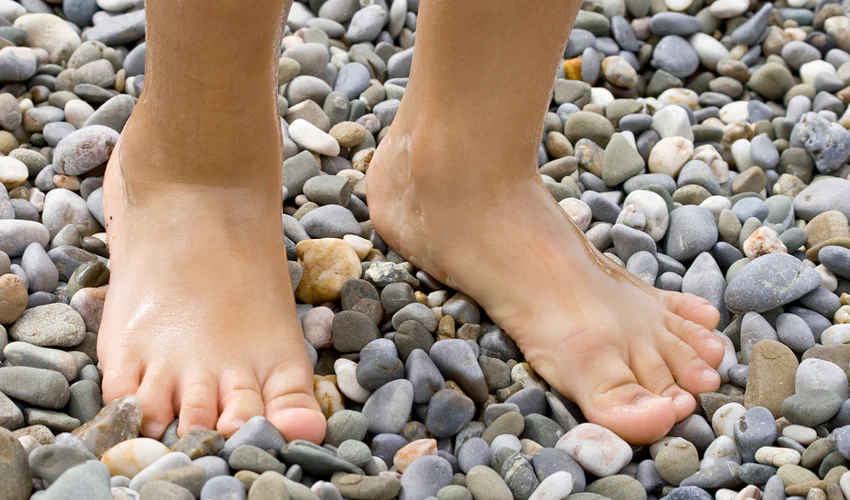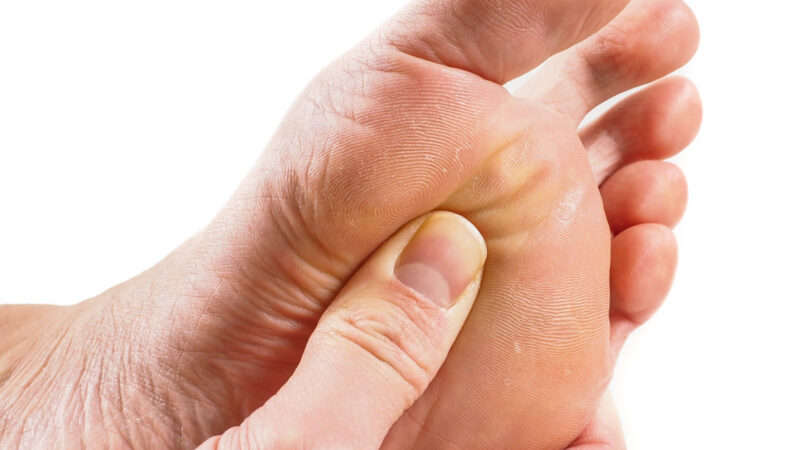Introduction:
Mike Barrett is an expert foot and ankle surgeon serving the Cambridge, UK area.
Mr Barrett understands the impact that metatarsalgia can have on your daily life. In this comprehensive guide, we will delve into the world of metatarsalgia, shedding light on its causes, symptoms, and effective management strategies. Whether you’re experiencing pain in the ball of your foot or seeking preventive measures, this blog post will provide valuable insights to help you navigate through this common condition.
What is Metatarsalgia?

Metatarsalgia is a condition characterized by pain in the ball of the foot. It often feels as if you’re walking on pebbles or may manifest as a diffuse ache, burning sensation, or general discomfort. The pain can affect one or both feet, with some individuals experiencing trouble in specific toes, while others feel it throughout the sole of their feet.
Common Causes of Metatarsalgia:
- Structural Factors: Conditions such as bunions, arthritis in the big toe, or previous big toe surgeries can weaken the big toe, leading to increased stress on the ball of the foot.
- Weight-related Issues: Being overweight can place excessive strain on your feet, contributing to the development or exacerbation of metatarsalgia.
- Improper Footwear: Wearing high-heeled shoes or ill-fitting footwear can disrupt natural weight distribution, leading to increased pressure on the ball of the foot.
- Foot Shape Abnormalities: Certain foot shapes, such as high-arched “cavus” feet, where the metatarsal bones point excessively downward, can contribute to metatarsalgia.
- Long Metatarsal Bones: Having a longer than normal metatarsal bone can result in additional pressure and discomfort in the ball of the foot.
- Clawed or Hammer Toes: Toe deformities that press the metatarsals downward towards the ground can lead to metatarsalgia.
- Ankle Stiffness: Limited ankle flexibility, preventing proper alignment with the leg, can contribute to metatarsalgia symptoms.
Managing Metatarsalgia Pain:
While some cases of metatarsalgia cannot be prevented, you can take proactive steps to alleviate pain and enhance your overall foot health. Consider the following management strategies:

Rest and Elevation: After prolonged periods of standing or walking, give your feet a break by resting and elevating them to reduce pressure and promote healing.

Metatarsal Dome or Pad insole: Use a metatarsal insole or pad bought from a pharmacist or shop. This places support under the middle of the foot to offload the forefoot.

Weight Management: Maintain a healthy weight for your height and build to minimize stress on your feet.

Proper Footwear: Opt for comfortable shoes with a small heel and ample room for your feet, allowing for natural movement and adequate support.

Ankle Exercises and Stretches: Engage in regular ankle exercises and stretches to improve flexibility and strengthen the Achilles tendon, thereby reducing strain on the ball of the foot.

Pain Relief: Over-the-counter pain relievers, as recommended by your healthcare professional, can provide temporary relief from metatarsalgia symptoms.
What stretches can I do?

Stand in a walking position with the leg to be stretched straight behind you and the other leg bent in front of you. Take support from a wall or chair.
Lean your body forwards and down until you feel the stretching in the calf of the straight leg.
Hold for 20-30 seconds or as pain allows then relax. Stretch the other leg.
Repeat 10 times. Video

Stand with the leg to be stretched behind the other leg.
Push your heel down while bending the knee to stretch the achilles tendon.
Repeat 10 times. Video
Conclusion:
Metatarsalgia can significantly impact your quality of life, but with the right knowledge and management strategies, you can find relief and restore comfort to your feet. As a trusted foot and ankle surgeon serving Cambridge, UK, I am here to provide expert guidance, accurate diagnosis, and personalised treatment options tailored to your specific needs. Don’t let foot pain hold you back; take control of your foot health and schedule a consultation with me today.
Remember, this blog post is for informational purposes only and should not replace professional medical advice. For a comprehensive evaluation and personalized treatment plan, consult with a qualified foot and ankle specialist.
Useful links:
https://www.nhs.uk/conditions/foot-pain/pain-in-the-ball-of-the-foot/
Last modified: June 29, 2023







